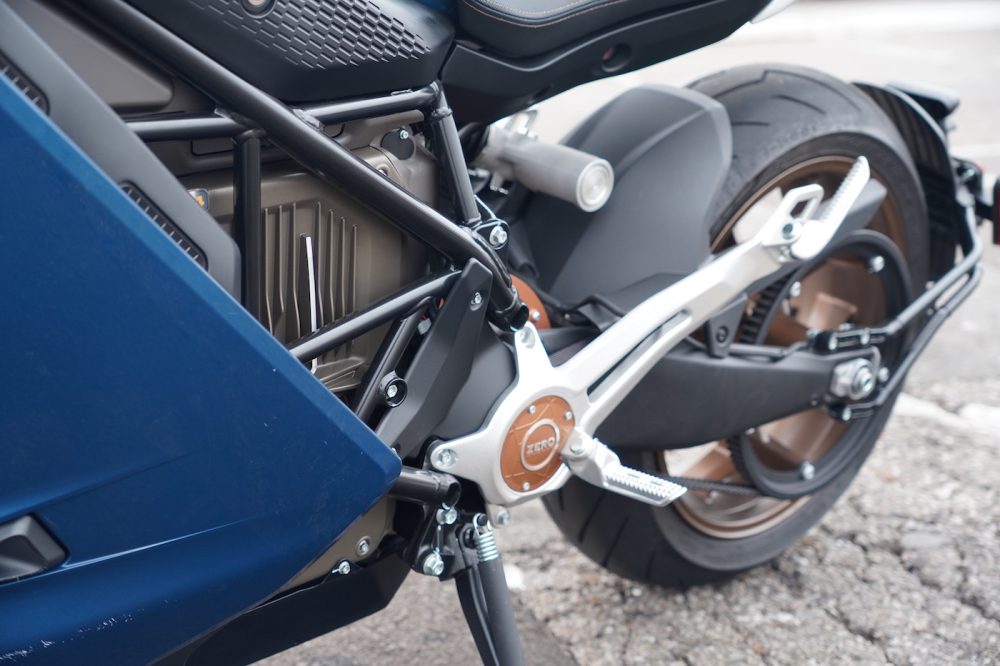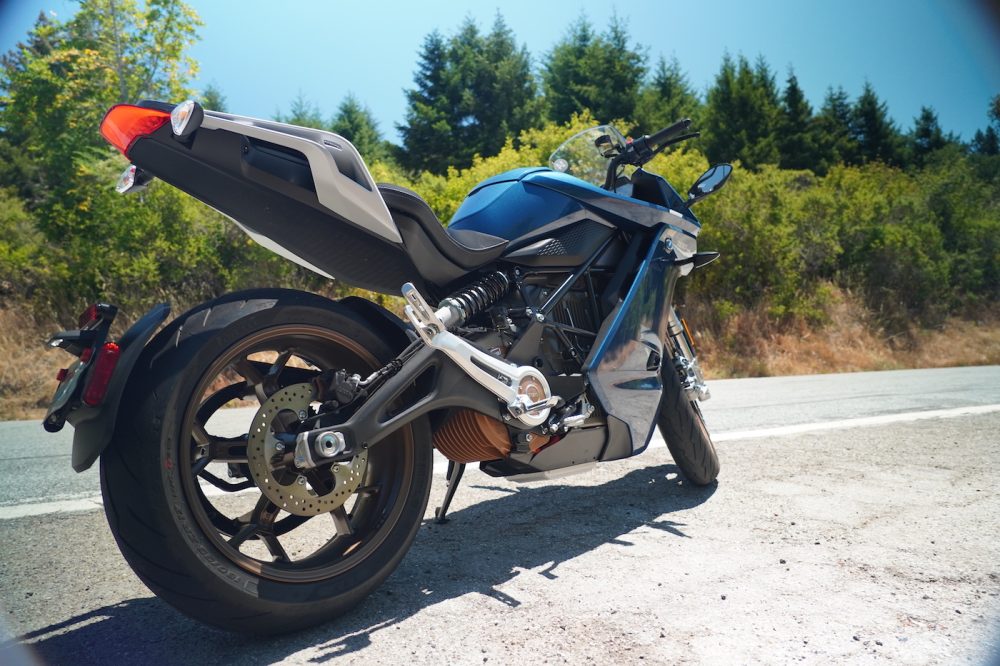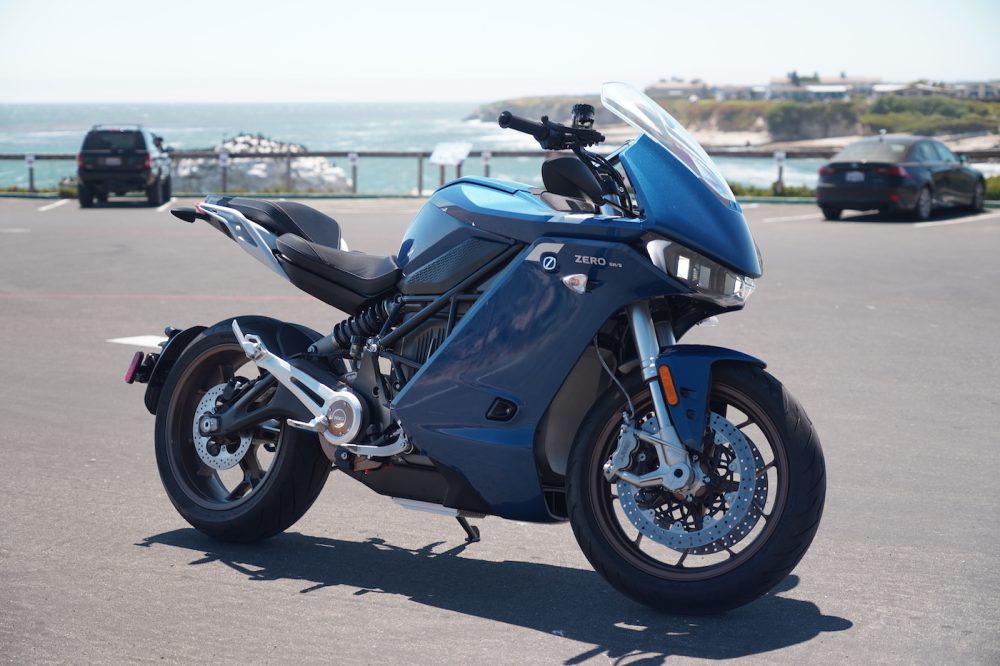
I recently had the chance to borrow a Zero SR/S electric motorcycle for several days to test out how well the company’s flagship model rides. The result? I’m going to go broke if I keep doing this stuff, because now I really want one in my garage.
This isn’t my first time on one of Zero’s electric motorcycles.
Or my second.
Or my third.
I’ve been fortunate enough to roll around the block more than a few times on Zero’s electric bikes, and they’ve always been a fun ride. But the SR/S was unlike anything I’ve ridden before, present company included.
Zero has an affinity for comparing their motorcycles to aircraft, and CTO Abe Askenazi once told me that while he feels like the Zero SR/F Streetfighter is more of a fighter jet, the Zero SR/S is more of a private jet.
And having ridden both now, I finally see what he meant. While the SR/F gave me the seat-of-the-pants thrills I was expecting, it also left me tighter and more tucked than I might have preferred for the long rides along the California coast I subjected it to. But this time on the more laidback SR/S, I was more in my element with a comfortable ride that still packed every bit as much power as the screaming SR/F.
To see my test riding in action, check out my video review below. Then keep reading to hear all of my thoughts on the Zero SR/S electric motorcycle.
Zero SR/S video review
Zero SR/S quick specs
- Motor: 82 kW (110 hp) ZForce 75-10 air-cooled mid-drive motor
- Torque: 190 Nm (140 lb-ft)
- Top speed: 200 km/h (124 mph)
- City range: 259 km (162 mi)
- Highway range at 89 km/h (55 mph): 159 km (99 mi)
- Highway range at 113 km/h (70 mph): 132 km (82 mi)
- Fuel economy equivalent (city): 0.55 L/100 km (430 MPGe)
- Fuel economy equivalent (highway): 1.08 L/100 km (219 MPGe)
- Battery: Air-cooled 14.4 kWh nominal, 12.6 kWh actual
- Typical recharge cost: $1.31
- Charge time: 8 hours with 1kW onboard charger, 4 hours with Level 2 station and 3 kW charger, 1 hour with optional dual 6 kW chargers and Level 2 station
- Curb weight: 229 kg (505 lb)
- Front brakes: Dual J-Juan 4-piston radial calipers with Bosch Advanced MSC (ABS)
- Rear brakes: J-Juan single-piston floating caliper with Bosch Advanced MSC (ABS)
- Front suspension: Showa 43 mm Big Piston Separate Function Fork with 120 mm (4.72 in) travel
- Rear suspension: Showa 40 mm piston piggyback reservoir with 140 mm (5.51 in) travel

Zero’s most comfortable ride yet
Both the Zero SR/F and SR/S are powerful motorcycles, which makes sense, considering they’re largely the same bike. They share the same frame, same motor, same batteries, and pretty much the same everything, outside of a few key factors.
The most glaring difference is of course that the SR/S is fully faired. Some people like the look better. Some people like the increased efficiency that it offers. Some people don’t even like it. That’s fine, it’s largely an aesthetic difference (outside of that increased efficiency).
The more perceptible difference is the ride. The suspension is softer, the bars are higher, and the foot pegs are lower. That equals a more relaxed riding posture and a more comfortable ride overall.
Tucking in tight in the SR/F was fun, don’t get me wrong. But for the long stretches of open road and really gliding into those corners, the SR/S is where it’s at. At least if you ask me.
I’d occasionally stand up on the pegs of the SR/F to stretch my legs, whereas I never wanted to get off the SR/S.
But alas, eventually I would have to get off. And it was usually to charge. With a 14.4 kWh battery pack (though more like a true 12.6 kWh) and mixed-road riding, I could go for a couple hours before I started to get nervous about finding a plug. Lunch was usually where I’d get my charging in.
The bike I rode came with the base 3 kW of onboard charging, meaning any of the plethora of Level 2 stations around me could get me over half of the way charged in a two-hour stop. Lunch rarely takes that long, so I’d usually get in a decent 30-40% charge during a lunch stop. If I was doing a whole day of riding, DC fast-charging sure would be nice, but maybe Zero will offer that eventually.
When I spent a week with the SR/F, I charged at home in a garage (or to be fair, Electrek editor-in-chief Fred’s garage). I never even had to think about getting a Level 2 charge while I was out and about, or much less a DC fast charge, since an overnight charge lasted me each day just fine.
But if you want to ride all morning and then keep riding again all afternoon, upgrading to the 12 kW of onboard charging is probably worth it to get a nearly full charge in just over an hour. For the rest of us commuters, Level 1 charging overnight is likely sufficient, and that means you don’t have to upgrade the stock charger.
And considering this isn’t a cheap bike, saving on upgrades is likely to be a popular theme. The SR/S starts at $19,995 before incentives. There’s $1,000 in federal tax incentives, plus some states offer even more incentives. But even so, it ain’t cheap.
Zero of course offers more affordable models, and you can snag some for roughly half this price. But there’s a reason those aren’t flagship models and this one is. It’s simply more: more power. More range. More comfortable. More fun. More everything.
It’s also more weight. At 505 lb (229 kg), she’s a hefty one. I’m not a big dude, either. The bike somehow doesn’t feel nearly that heavy in motion, though maneuvering it around ends that illusion. I definitely dropped it once while parking. It was dumb and my fault. I was rolling it into position and grabbed too much front brake while it was slightly leaning, causing it to lean even further. It was one of those, “This is fine. This is fine. This isn’t fine anymore,” moments. Embarrassing, but what can you do? I just forgot how damn heavy it was, especially since I had just been riding the several-hundred-pound-lighter Zero FXE a few days before.
But what else can I complain about here? It’s heavy and expensive. But other than that, it’s amazing. I only spent a few days with it, but I want it back. I want it to be mine.
I’d love to see prices come down for amazing electric motorcycles like these, but at least Zero offers other more affordable options. That’s more than I can say for some high-performance electric motorcycle companies.
But for high performance e-motos like these, we’re still in the pay-to-play stage of the industry. And if you’ve got the cash, I can tell you about a pretty blue bike you’ll love to play with.
FTC: We use income earning auto affiliate links. More.









Comments